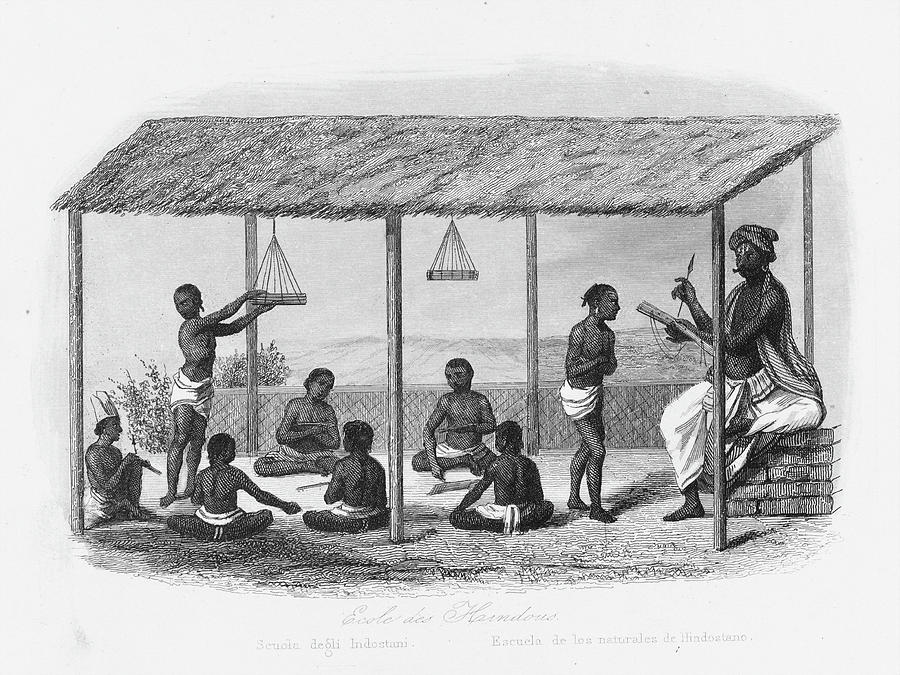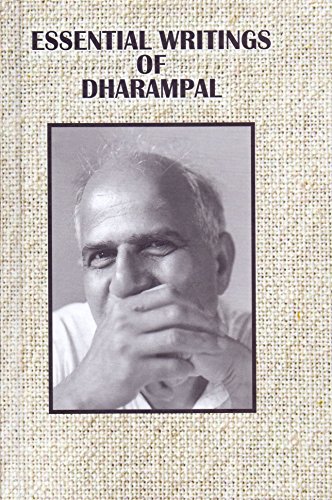- Visitor:159
- Published on:
The Colonial Surveys on Education
The most well-known and controversial point which emerged from these surveys was an observation made by William Adam in his first report that there seemed to exist about 1,00,000 village schools in Bengal and Bihar around the 1830s.

The instructions regarding the collection of information about the extent
and nature of indigenous Indian education and its contemporary state were
largely the consequence of the long debate in the House of Commons in 1813
on the clause relating to the promotion of “religious and moral improvement” in
India. Before any new policy could be devised, the existing position needed to
be better known. But as generally happens in the gathering of any such
information, and more so when such collection of data was a fairly new thing,
the quality and coverage of these surveys varied from presidency to presidency
and even from district to district.
The information which is thus available today, whether published, or still
in manuscript form in governmental records as is true of the details of the
Madras Presidency indigenous education survey, largely belongs to the 1820s
and 1830s period. An unofficial survey made by G.W. Leitner in 1882 for the
Panjab compared the situation there for the years before 1850, with that in
1882.

Before proceeding with the analysis of this information its main points
may be highlighted here in a few paragraphs.
The most well-known and controversial point which emerged from these
surveys was an observation made by William Adam in his first report that there
seemed to exist about 1,00,000 village schools in Bengal and Bihar around the
1830s.This statement while it had no known backing of official records appears
to have been founded upon impressions of various high British officials and
others who had known the different areas rather intimately and over long periods.
Similar statements had been made, much before W. Adam, for areas of the
Madras Presidency by men like Thomas Munro, that every village had a school39
and for areas of the newly extended Presidency of Bombay around 1820 by
senior officials like G.L. Prendergast, “that there is hardly a village, great or
small, throughout our territories, in which there is not at least one school, and in
larger villages more.” Observations made by Dr. G.W. Leitner in 1882 show
that spread of education in the Panjab around 1850 was of a similar extent.
Since these observations were made, they have been treated by some
with the sanctity reserved for divine utterances, and by others, as blasphemous.
Naturally, the first view was linked with the growth of a vocal Indian nationalism,
though its exponents, besides prominent Indians of the late nineteenth and early
twentieth century, have also included many illustrious Englishmen, like Keir
Hardie, and academics like Max Mueller. The second, the blasphemous view
of them, was obviously held by those who in the later period were, in one
capacity or another, concerned with the administration of India or those who
felt impelled, sometimes because of their commitment to certain theoretical
formulations on the development of societies, to treat all such impressions as
unreal. It had become necessary, especially after 1860, that the men who, after
a long period in the British Indian administration or its ancillary branches, had
the ability to write should engage in the defence of British rule, and especially
its beginnings, and consequently refute any statements which implied that the
British had damaged India in any significant way.
Yet, while so much ink has been spilt on such a controversy, little attempt
is known to have been made to place these statements or observations in their contextual perspective. Leaving Leitner’ s work, most of these statements belong
to the early decades of the nineteenth century. The difficulty, however, for the
later British administrator, to appreciate the substance of the controversy is
quite understandable. For, as may be noted from the brief account given in the
preceding pages, till about 1800 England had few schools for the children of
ordinary people. Even many of the older Grammar Schools were at that time in
poor shape. Moreover, the men who in this period wrote about India (whether
concerning its education or its industry and crafts or the somewhat higher real
wages of Indian agricultural labourers compared to such wages in England)41
belonged to the late eighteenth and early nineteenth century society of Great
Britain. Therefore, quite naturally, when they wrote about a school in every
village of India, while it may or may not have been literally true, in contrast to
the British situation, it must have appeared to them so. And though they did not
much mention this contrast in so many words, it may reasonably be assumed
that, as perceptive observers it was such a contrast which led to these
judgements.
The other points which emerge from these surveys, and which are based
not on mere impressions but on hard data, is the nature of this Indian education,
its content, the duration for which it ordinarily lasted, the numbers actually
receiving institutional education in particular areas and most importantly detailed
information on the background of those benefiting from these institutions.
However, it was but natural that the idea of a school existing in every
village, dramatic and picturesque in itself as such statements were, attracted
great notice and eclipsed the rest of the equally important details. Still, it is
nevertheless unfortunate that the more detailed and hard facts have received
hardly any notice or analysis. For, it is these latter facts which provide an insight
into the nature of Indian society at that period of time. Deeper analysis of this
data and adequate reflection on the results followed by required further research
may help solve even the riddle of what has been termed the “legend of the
1,00,000 schools.”
According to this hard data, in terms of the content and proportion of
those attending institutional school education, the situation in India in 1800 (and,
it should be remembered that it is a greatly damaged and disorganised India
that one is referring to) does not in any sense look inferior to what obtained in
England then; and in many respects Indian schooling seems to have been much more extensive. The content of studies does not appear very dissimilar to what
was then studied in England. The duration of study was more prolonged. The
method of school teaching was the method which is said to have greatly helped
the introduction of popular education in England but which had prevailed in
India for centuries. School attendance especially in the districts of the Madras
Presidency, even in the decayed state of the 1820s, was proportionately far
higher than the numbers in all variety of schools in England in 1800. The conditions
under which teaching took place in the Indian schools were less dingy and more
natural; and it was observed that the teachers in the Indian schools were
generally more dedicated and sober than their English counterparts. The only
aspect, and certainly a very important one, where Indian institutional education
seems to have lagged behind was with regard to the education of girls, which
quite possibly may have been proportionately more extensive in England in 1800,
and was definitely the case, a few decades later. However, the accounts of
education in India do often state, though it is difficult to judge their substantive
accuracy from the data which is so far known, that the absence of girls in schools
was explained by the fact that most of their education took place in the home.
It is, however, the Madras Presidency and Bengal-Bihar data, concerning
the background of the taught (and in the case of the five districts of BengalBihar, also of the teachers) which presents a kind of a revelation: for the
data reveals a picture which is in sharp contrast to the various scholarly
pronouncements of the past 100 years or more, in which it had been assumed
that education of any sort in India, till very recent decades, was mostly limited
to the twice-born amongst the Hindus, and amongst the Muslims to those from
the ruling elite. The actual situation which is revealed was different, if not quite
contrary. As will be noted in greater detail further on, for at least amongst the
Hindoos, in the districts of the Madras Presidency (and dramatically so in the
Tamil-speaking areas) as well as the two districts of Bihar, it was instead those
termed Soodras, and the castes considered below them45who predominated in
the thousands of the then still existing schools in practically each of these areas.
The last point which this work briefly touches on concerns the conditions
and arrangements which alone could have made such a vast system of education
feasible. To an extent, though supported by considerable hard data, the conclusions to which this leads are still tentative, and in statistical terms somewhat
speculative. It seems however, that it was the sophisticated operative fiscal
arrangements of the pre-British Indian polity, through which substantial
proportions of revenue had long been assigned for the performance of a
multiplicity of public purposes, and which seems to have stayed more or less
intact through all the previous political turmoils, which made such education
possible; and it was the collapse of this arrangement through a total centralisation
of revenue, as well as political structure that led to educational as also to decay
in the economy, social life etc. If this inference is at all valid a re-examination of
the various currently held intellectual and political assumptions with regard to
the nature of pre-British Indian society, and its political and state structure
becomes imperative.
Source:
Gita Dharampal, Essential Writings of Dharampal, Publications Division, Government of India, pp. 205-209
Center for Indic Studies is now on Telegram. For regular updates on Indic Varta, Indic Talks and Indic Courses at CIS, please subscribe to our telegram channel !
- 79 min read
- 0
- 0










